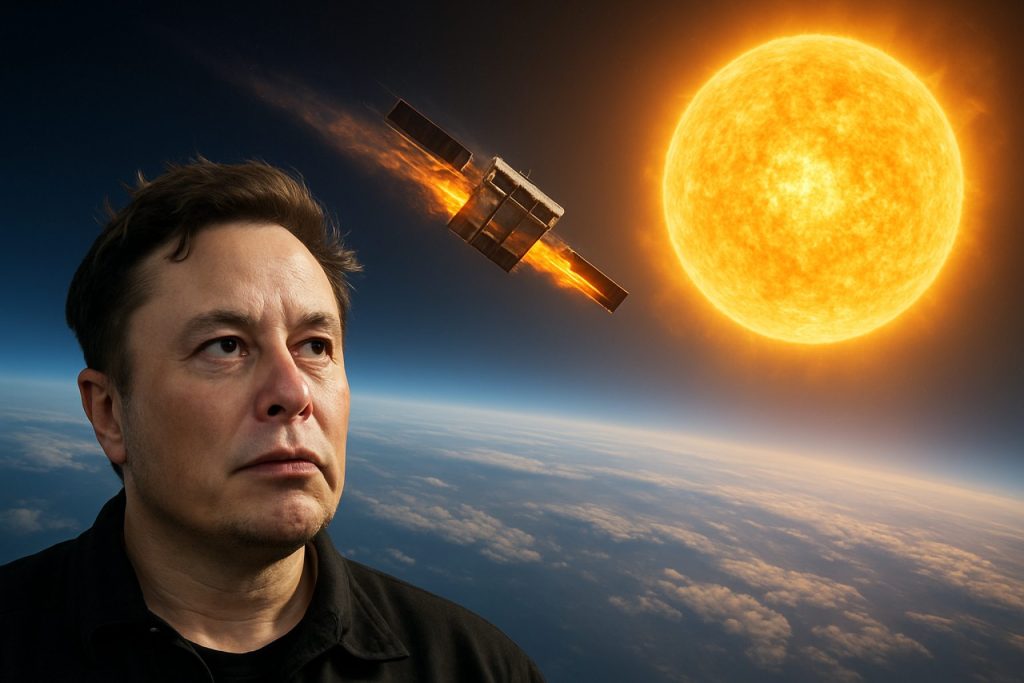
The Sun Strikes Back: Solar Storms Threaten Elon Musk’s Starlink Empire as Satellites Plummet from Orbit
Solar storms are wreaking havoc on Elon Musk’s Starlink satellites, creating risks and revealing unseen dangers in 2025’s space race.
Quick Facts
- 7,000+ Starlink satellites currently orbit Earth
- Dozens lost in major solar storms since 2024
- 1 Starlink debris incident confirmed on Canadian soil (August 2024)
- Solar maximum hits peak intensity in 2025
Elon Musk has launched more than 7,000 Starlink satellites, weaving a digital web around our planet and reshaping how the world connects. But in 2025, the tech titan faces a cosmic threat more relentless than business rivals, political figures, or Silicon Valley drama. Musk’s greatest adversary? The Sun itself.
As our star enters its “solar maximum”—the turbulent peak of its 11-year activity cycle—powerful solar storms are wreaking havoc on Starlink’s low-Earth orbit fleet. These geomagnetic eruptions unleash particles and magnetic fields that heat Earth’s upper atmosphere, causing drag that sends even the newest satellites spiraling down to a fiery demise.
Why Are Starlink Satellites Dropping Out of the Sky?
The very design that lets Starlink satellites provide fast, global internet—deploying thousands of inexpensive, low-flying craft—is exactly what makes them so vulnerable. As NASA and space experts have discovered, minimalist satellites orbiting just a few hundred kilometers up are “particularly prone” to the atmospheric agitation caused by solar storms.
Unlike more robust spacecraft, these satellites lack heavy shielding. So when the Sun unleashes its fury, they’re sitting ducks. Scientists say the Starlink constellation is “dropping like flies,” as waves of geomagnetic chaos accelerate the satellites’ decay and send some tumbling prematurely back to Earth.
Has Starlink Debris Ever Hit Earth?
Space junk worries are no longer theoretical. In August 2024, a piece of a Starlink satellite crashed onto a Canadian farm. While the debris safely landed without injury, the incident sparked fresh concerns about the growing risks of orbital fallout—especially as more satellites descend due to solar activity.
What’s Next: Can SpaceX and Science Stop This Trend?
SpaceX engineers are pushing the limits of technology to shield future satellites, but as experts from NASA and NOAA warn, only so much can be done. Predicting solar storms has improved, but there’s currently no way to fully prevent geomagnetic events from jeopardizing spacecraft.
Space historian Jonathan McDowell has called the situation unprecedented, comparing Musk’s control of orbital space to a “cloud of gnats” swarming the planet—a dominance not seen since the dawn of the space age. Yet, in this cosmic drama, even the richest billionaire is humbled by forces beyond human control.
Researchers at NASA and SpaceX collaborate to forecast trends and devise new defenses, but the coming months will truly test the resilience of mega-constellations against nature’s fury.
How Will Solar Storms Shape the Future of Satellite Internet?
The outcome of this high-stakes battle will redefine space safety and global connectivity. If Starlink and rival systems can engineer their way through the solar storm gauntlet, the Internet’s reach could become nearly universal. If not, 2025 may mark a turning point in how humanity views, uses, and protects the fragile shell of technology above our heads. Stay tuned for updates on how the Sun’s tantrums could change everything.
Stay alert as the space race enters a new solar-charged phase—follow the latest on satellite safety and cosmic threats!
- Track solar storm forecasts at NOAA.
- Review satellite news and launches via SpaceX.
- Brush up on solar activity with NASA updates.
- Watch for future Starlink launches and potential debris recovery news.



